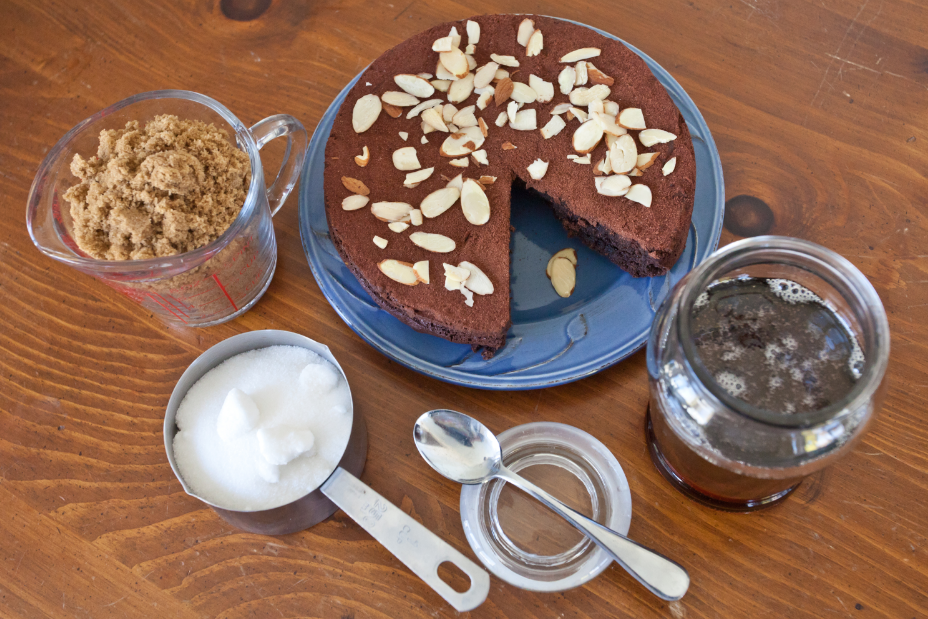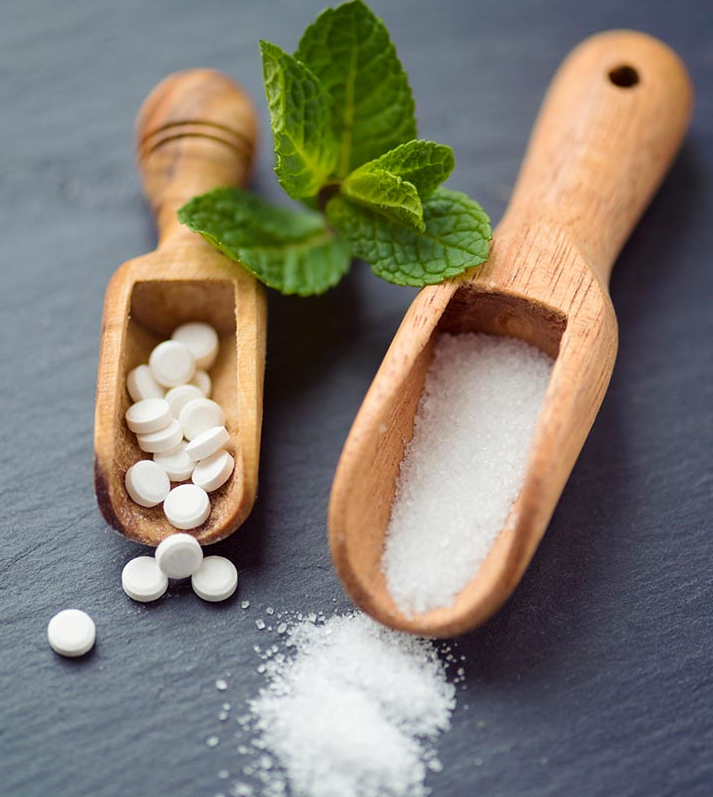Categories
- Blog (60)
The 2015 edition of the Dietary Guidelines for Americans strongly recommends reducing the calorie intake from sugar to 10% or less. The focus is on added sugars rather than sugars inherent in foods, such as lactose in milk or fructose in apples.
To this end, many bakers have taken the lead in reducing the amount of added sugar. However, this is not as easy as it sounds, especially in baked products.
Traditional sugar, also known as sucrose, is essential in baking. Not only does it provide the desired sweetness, but sugar also has many other important functions in baked goods due to its unique chemical properties. For example, in yeast fermented products, the sugar keeps the yeast fermentation going. In some products, it affects the starch gelatinization rate.
When reducing the amount of added sugar in baked goods, high-intensity sweeteners are often combined with traditional sweeteners and/or fillers for optimal sweetness and some other desired function. High-intensity sweeteners are much sweeter than sucrose, so the same sweetness can be achieved in very small amounts. The biggest challenge when using high-intensity sweeteners in baked goods is ensuring that the ingredients are in balance to provide the necessary texture and mouthfeel while achieving the desired sweetness.

There are currently eight high-intensity sweeteners in the United States. Six of these — acesulfame (acesulfame potassium), advantame, aspartame, neotame, saccharin, sucralose — are regulated by the U.S. Food and Drug Administration as food additives and are considered artificial sweeteners flavoring agent. The other two types of monk fruit and stevia are generally recognized as safe (GRAS) ingredients and are considered natural sweeteners.
Since its introduction 25 years ago, aspartame has revolutionized the food industry due to its pure sweetness closer to the taste of sugar than any other high-intensity sweetener. Hence aspartame appears in the ingredients of everyday foods, Such as dairy products, grains, meat and juices, and can complete the metabolism in the body.
Because aspartame is thermally unstable, its use in baked goods is limited to additions after baking or frying, such as icings, fillings, and brighteners.
Advantame and neotame are the two newly approved sweetest additives. Neotame, approved for use in 2002, is about 7,000 to 13,000 times sweeter than sucrose. Advantame, approved in 2014, is almost 20,000 times sweeter than sucrose.
Two Generally Recognized As Safe (GRAS) high-intensity sweeteners—stevia and monk fruit extract—are beloved by many bakers for their natural, clean-label reputations. Both are based on plant extracts and have good thermal stability.
Stevia is better known. Stevia, derived from the leaf extract of Stevia rebaudiana (steviol glycosides), is 200 to 400 times sweeter than sucrose. The FDA has received notifications for the use of a number of generally recognized as safe high-purity (95% minimum) steviol glycosides, including rebaudioside A (also known as reb A), stevioside, rebaudioside D, and rebaudioside A and rebaudioside D. /or a stevioside mixture with stevioside as the main component. FDA has not challenged any of the notifiers’ generally recognized safety decisions. Stevia leaves and crude stevia extracts are not considered generally recognized as safe, and they are not allowed to be imported into the United States for use as sweeteners.
Another high-intensity sweetener generally recognized as safe is monk fruit (Siraitia grosvenorii). The zero-calorie sweetness of this little vine subtropical fruit comes from natural antioxidants called mogrosides, which are 300 times as sweet as sucrose.
Thaumatin is a botanical extract known for its taste enhancing properties. Used for centuries by West Africans to enhance the sweetness of cornbread, tart fruits, and to make toddy wine tastier, thaumatin is a natural protein from the West African rainforest katemfe fruit (Thaumatococcus daniellii ) and is therefore a natural ingredient.
Research in the 1970s focused primarily on the sweetening properties of Thaumatin, which for a while also dictated the direction of its regulation and marketing. Today, Thaumatin is generally recognized as safe as a flavor enhancer, but not approved as a sweetener. It appears as a “natural flavor” in the ingredient information.
This natural flavor is about 2,000 to 3,000 times sweeter than sucrose, is water-soluble, and heat and pH are stable, which make it very versatile. It is a protein with 4 kcal of energy per gram, but is used in very low doses due to its intense sweetness.

The latest sweetener to enter the market is allulose, a simple sugar with few calories found in nature. The ingredient, which received GRAS status in 2015, has a cane sugar taste and is approximately 70% sweeter; therefore, it is not a high-intensity sweetener. Instead, it’s considered a low-calorie sugar because it provides 90 percent fewer calories than full-calorie sugar.
Bakers can use allulose to create low-calorie baked products without the long-lasting aftertaste and synthetic or chemical feel.
As a naturally occurring substance, allulose is found in small amounts in jackfruit, figs, raisins, and wheat, and is naturally present in small amounts in certain foods, such as caramel sauce, maple syrup, and brown sugar. Allulose has several beneficial health properties. When ingested, allulose is absorbed by the body but not metabolized; therefore, it is not converted to glucose, so its calories are not utilized by the body, and it is almost calorie-free. Unlike other sugars with calories, allulose has no effect on blood sugar and insulin levels.
Erythritol and maltitol are popular in baked goods. Because of the bulk of these sweeteners, they are often combined with high-intensity sweeteners to achieve the right texture in baked goods.
The sweetness of erythritol is about 60%-70% of sucrose, and the calories per 1g of erythritol are 0 kcal. Erythritol occurs naturally in fruits such as pears, watermelon, grapes, as well as mushrooms and fermented foods, including wine, soy sauce, and cheese. It has been generally recognized as safe since 2001, and this bulk sweetener is very attractive for baked goods with natural claims as a selling point.
Maltitol, on the other hand, is sweeter (about 90% sweeter than sugar) and contains calories (2.1 kcal/g). Many properties similar to cane sugar make it popular in baked goods.
Bakers must remember that no single ingredient can replace the sweetness of sugar and its multiple functions in baked goods. When using high-intensity sweeteners, it is critical for bakers to recognize the function of sugar in the system and to identify suitable substitutes.
Best Nutras is specilizing at the production of sweeteners from different sources, like Erythritol, maltitol, allulose, Monk fruit Extract and stevia for customers’ better choice. Welcome to send an inquiry at [email protected].